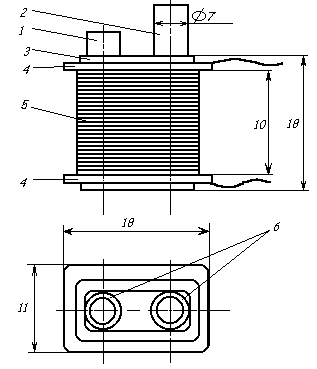Announcement
Collapse
No announcement yet.
2 boxxxx :)
Collapse
X
-
Originally posted by porkluvr View PostI was trying to avoid answering that question because I have not built this unit and I might give a wrong answer. That's never stopped me from giving a wrong answer before so here goes:
This detector should probably be nulled it as close to zero as you can get it.
You can use a multimeter for initial setup but after your 2-box has been bounced around a few times it will need to be nulled again. Unless you want to carry a multi-meter around with you, you should be able to use the panel meter for that.
Yes i think the only way is one good of steady arm for coils...
For nulling i will try the method with multimeter... ( AC mV scale )
Comment
-
ok aft_72005. no prob... i try another way for upload....
here my pcb for 2BOXAttached Files
Comment
-
It was written by me on 01-03-2010 in posting # 531.Originally posted by mikebg View PostThe sketch represents a TWO BOX system produced in 70-ties by a Canadian company “Sharpe Instruments”. The system is used for prospecting with sine induction at 1600Hz.
Both boxes seem more as large hoops and operators seem as coil cores. Both units are connected by a long cable trailed on the ground.
Note that when the system is in action, the mutual inductance between loops varies random.
It turned out that this design was made in 50-ties by Vaino Ronka, the inventor of the most deep searching detectors.
Remember the definition of (R)EMI group for TWO BOX:
"The TWO BOX metal detector is a system of two boxes TX and RX used by two operators. Each box contains its battery and coil. When the system is in action, the mutual inductance between coils varies random."
The picture below shows only the "RX box" of the system. Another operator wears the "TX box" connected on the other end of the cable.Attached Files
Comment
-
Hi golden skull, i dont finish T/R because it has a problem with sound...Originally posted by GOLDENSKULL View PostHi GeorgeGW,
Did you complete building this T/R locator (sevzirfo T/R locator) ?
what about it's performance ?
yes kt315 i check 4520 and it has a problem with outputs at UB5.... i will replace it and re-check the circuit tomorowOriginally posted by kt315 View PostGeorgeGW, you would be verify outputs of U5B --> diodes-->base of Q1.
Comment
-
Flat TWO BOX
Another design of Vaino Ronka. This is "2boxx" machine Geonics EM15, which is as thick as one board. At both ends of the board are located in the ferrite antenna tilt 35 degrees. In the board has elliptical openings to reduce weight and to form a handle and a place for zeroing control.Attached Files
Comment
-
Hi mikebg, interesting story, what is schematic of this Geonics EM15?Originally posted by mikebg View Post
Another design of Vaino Ronka. This is "2boxx" machine Geonics EM15, which is as thick as one board. At both ends of the board are located in the ferrite antenna tilt 35 degrees. In the board has elliptical openings to reduce weight and to form a handle and a place for zeroing control.
Comment
-
WM6, this is very old machine.Originally posted by WM6 View PostWhat is schematic of this Geonics EM15?
We dont know the original circuit diagram, but know what to improve.
Improvements of Geonics Ronka EM15
1. Vertical rod of TX coil
2. Adjustable angle of RX coil
3. Longer ferrite rods for TX and RX coils (200mm)
4. Increasing diameter of coils using two ferrite rods dia. 10mm
5. Introducing AUDIO with LS and jack for HP (earphones)Attached Files
Comment
-
Thank you mikebg, very informative.Originally posted by mikebg View PostWM6, this is very old machine.
We dont know the original circuit diagram, but know what to improve.
Improvements of Geonics Ronka EM15
1. Vertical rod of TX coil
2. Adjustable angle of RX coil
3. Longer ferrite rods for TX and RX coils (200mm)
4. Increasing diameter of coils using two ferrite rods dia. 10mm
5. Introducing AUDIO with LS and jack for HP (earphones)
Did you mean coil like this?

Comment
-

 , Please upload directly your pictures to geotech .thank you
, Please upload directly your pictures to geotech .thank you



Comment